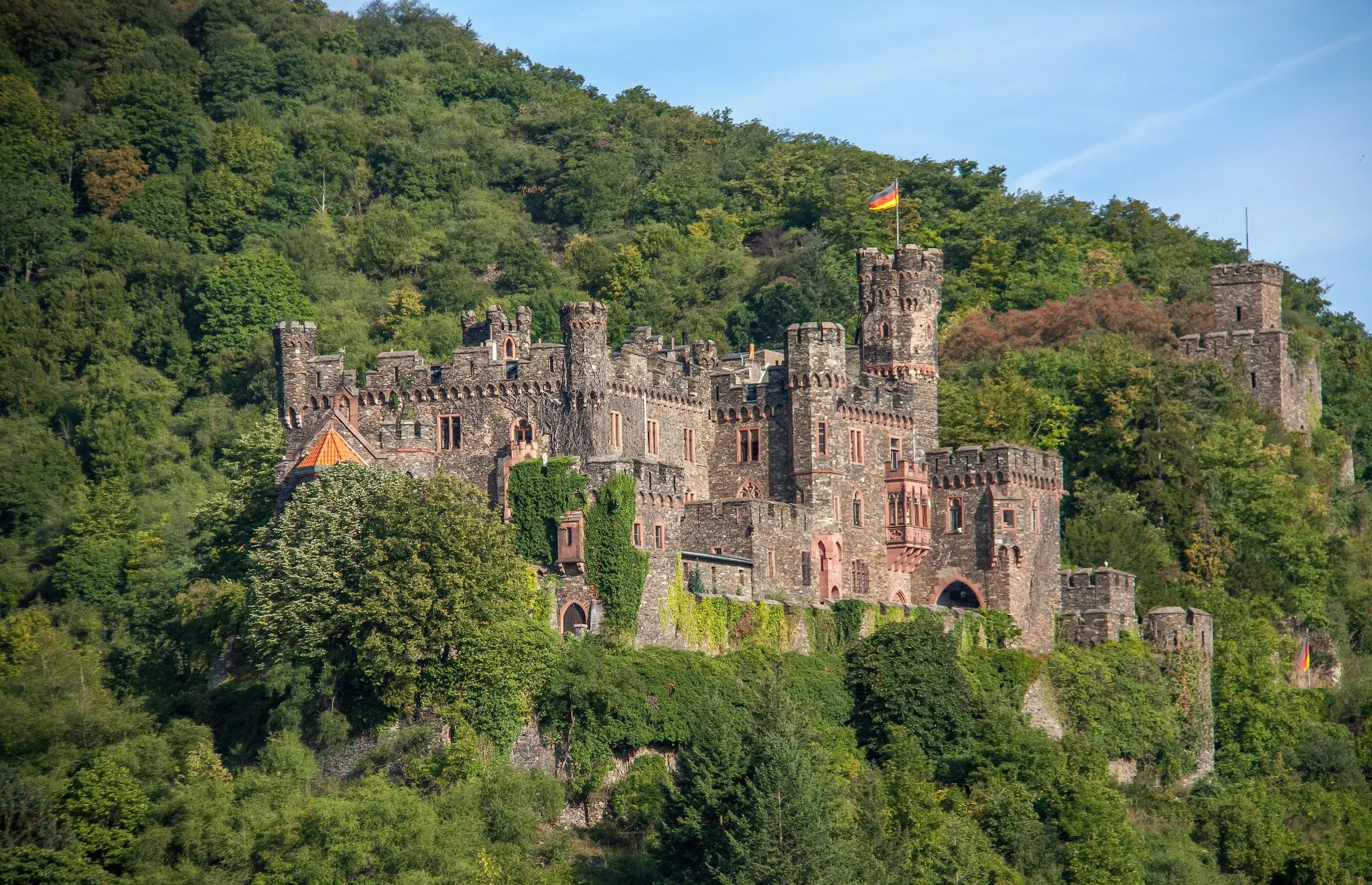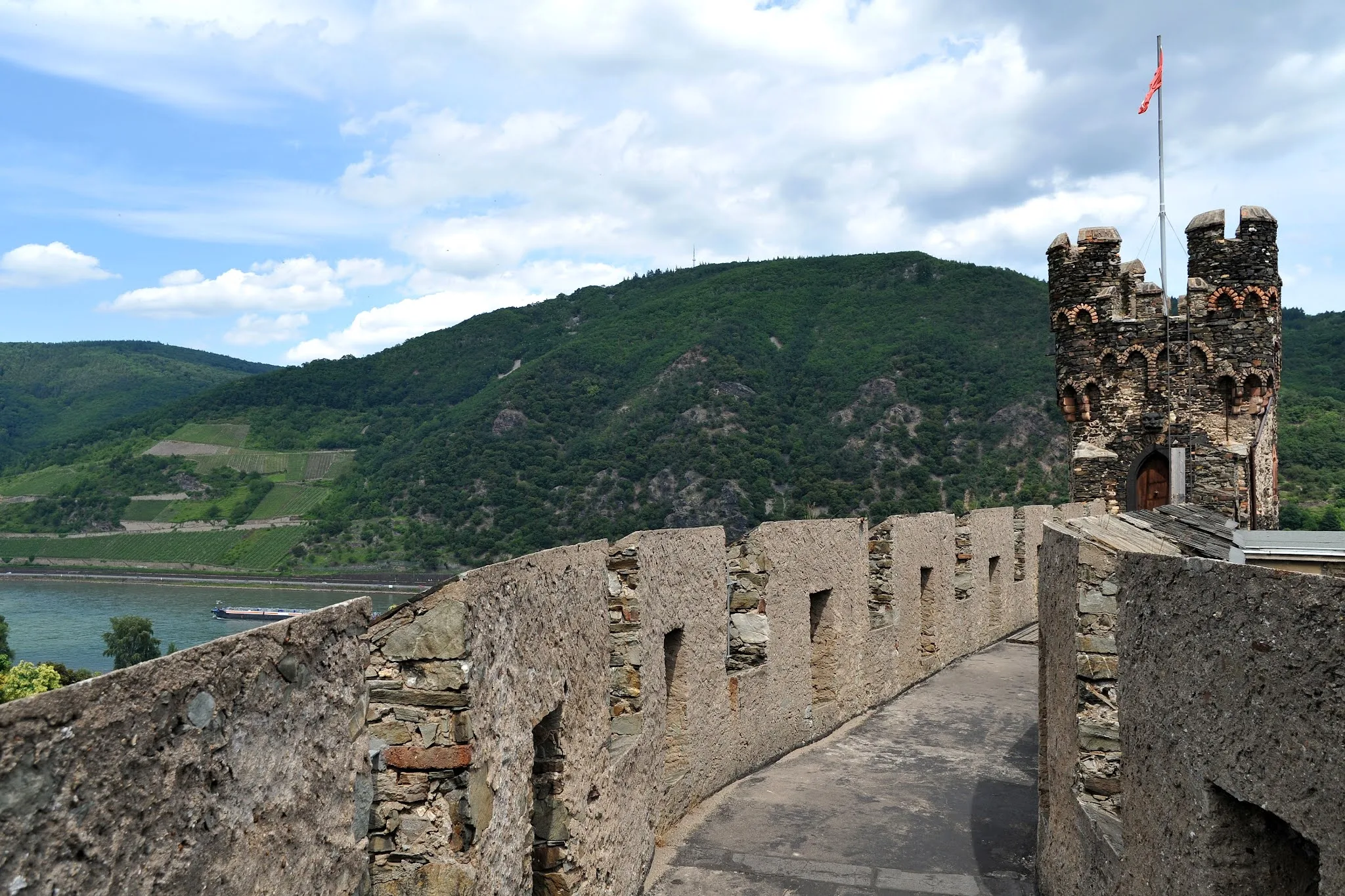The present-day Reichenstein Castle in Trechtingshausen, western Germany, is a typical example of a castle revived from nonexistence during the dawn of Rhine Romanticism.
 |
| Reichenstein Castle |
The rich collection of the castle museum attracts large numbers of tourists who travel along the Rhine to it. Lots of interesting and attractive exhibits await the guests of Reichenstein.
Reichenstein Castle History
It is currently very difficult to establish the exact date of the construction of Reichenstein Castle. The determination of the age of the oldest buildings in the castle points to the 11th century. At that time, the area was part of the possessions of the Kornelimünster Abbey, which is located near Aachen in Germany. The abbey appointed some governors (Vogt) endowed with administrative, judicial, and fiscal powers to control the regions and impose their will. To the office of one of the vogt, the "Knight of the Rainbow" was appointed. Born in 1151, Gerhard, who lived in Reichenstein Castle, left a memory of himself as a thief knight, keeping part of the merchandise of the merchants and shipowners who were obliged to "pay" a toll for passing in front of the castle.
 |
| Reichenstein Castle |
In 1213, the abbey, determined to shake off this bad image, appointed a new governor. The gentleman Philippe is the chosen one, hailing from the influential von Bolanden family. In 1218, his son Werner seizes power, but he soon dies leaving no heirs and the castle awaits a new era of being ruled by knights of thieves. From then on, the castle governors do not obey the abbey orders and increasingly take advantage of those who pass through the Rhine River valley.
In 1253, the Archbishop of Mainz and the urban militia "The Union of the Cities of the Rhine", conquered Reichenstein Castle. The then owner of the castle, Philip von Hohenfels, surrendered and, in exchange for saving his life, vowed to change his behavior. Later Philip set about restructuring the fortress, making it more powerful and defensive. This was a time of political change, in which Philip became vicar imperial. However, Philip's good intentions were soon left behind and he began looting everyone who approached the castle, as well as raiding church property, due to which he was excommunicated by the Archbishop of Mainz. It was then that the final period of the robber knights ended.
 |
| Reichenstein Castle |
In 1282, the army of the new King Rudolf I of Habsburg besieged the castle, although taking the fortress was not possible. The castle garrison, led by Dietrich Hohenfels, surrendered only due to famine. This was the grandest battle that took place on the Reichenstein walls in the 13th century. Today, in the museum, you can see the remains of arrows that were stuck in the grounds surrounding the castle.
Dietrich probably still managed to escape and was not beheaded, as claimed in local legend. By order of Rudolf I of Habsburg, Dietrich's associates were hanged in the trees of the Rhine Valley.
 |
| Reichenstein Castle |
Later, in 1290, the castle was burned. The king forbade the restoration of Reichenstein and a neighboring fortress, which also served as a lair for robber knights. But, despite the royal ban, the two castles were soon restructured.
In 1344, Emperor Louis IV of Bavaria transferred the castle to Mainz. This led to the beginning of a rivalry for possession of the rights to the castle between the Palatine and the Archbishop of Mainz. In 1396 the castle came under the control of Gottfried von Leiningen and at the same time the archbishop appointed bailiff Nicholas von Stein to control the property. As a result of lengthy negotiations, Gottfried withdrew, and further conflict by Reichenstein was avoided.
